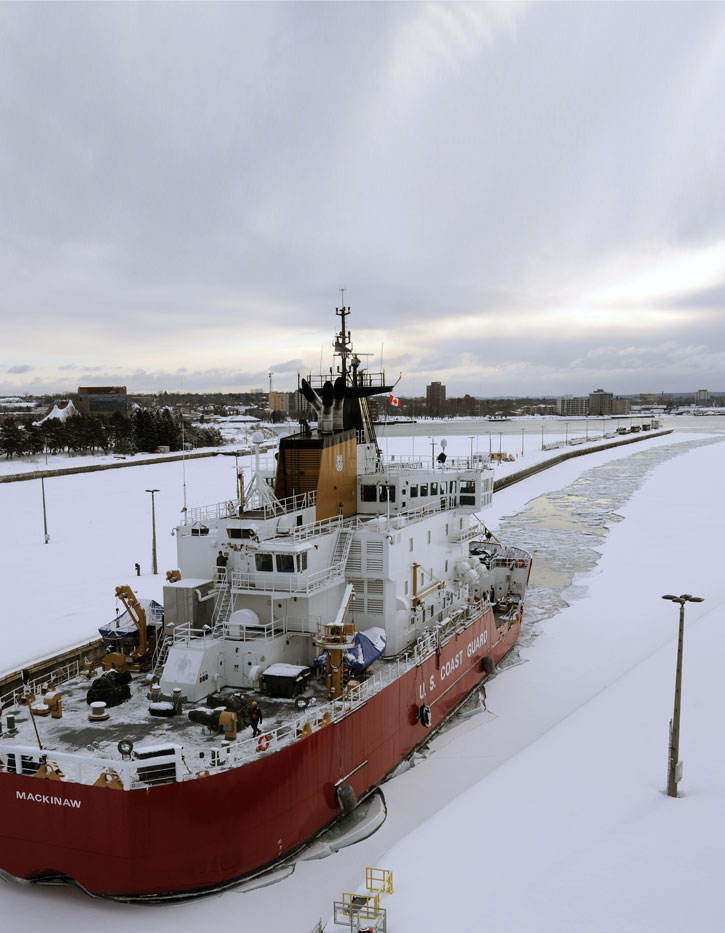
The Coast Guard’s Mackinaw can “back and ram” its way through walls of ice as high as 10 feet. Photo © U.S. Army Corps of Engineers (Detroit District), licensed Creative Commons Attribution Share-alike.
Lake Superior is altogether different. Water temperatures in this northern lake rarely climb out of the 40s, save for the occasional shallow bay. “No one’s ever drowned in Lake Superior,” the saying goes. “They all die of hypothermia first.”
Freshwater freezes more quickly than saltwater, and the Great Lakes often ice over several miles out from shore. The commercial shipping season shuts down from January 15 to March 25, but persistent ice can hamper it for much longer. During the winter of 2013-2014 ice clogged the Straits of Mackinac well into April, making it difficult for Mackinac Island to prepare for the subsequent tourism season. Ice floes on Lake Superior persisted well into May. Commercial ships can regularly cut through ice up to a foot thick. Thicker ice requires the services of the Coast Guard’s Mackinaw, a 240-foot heavily reinforced ship specifically designed for ramming a passage through ice. The Mackinaw can “back and ram” its way through walls of ice as high as 10 feet.
Excerpted from the Third Edition of Moon Michigan’s Upper Peninsula.